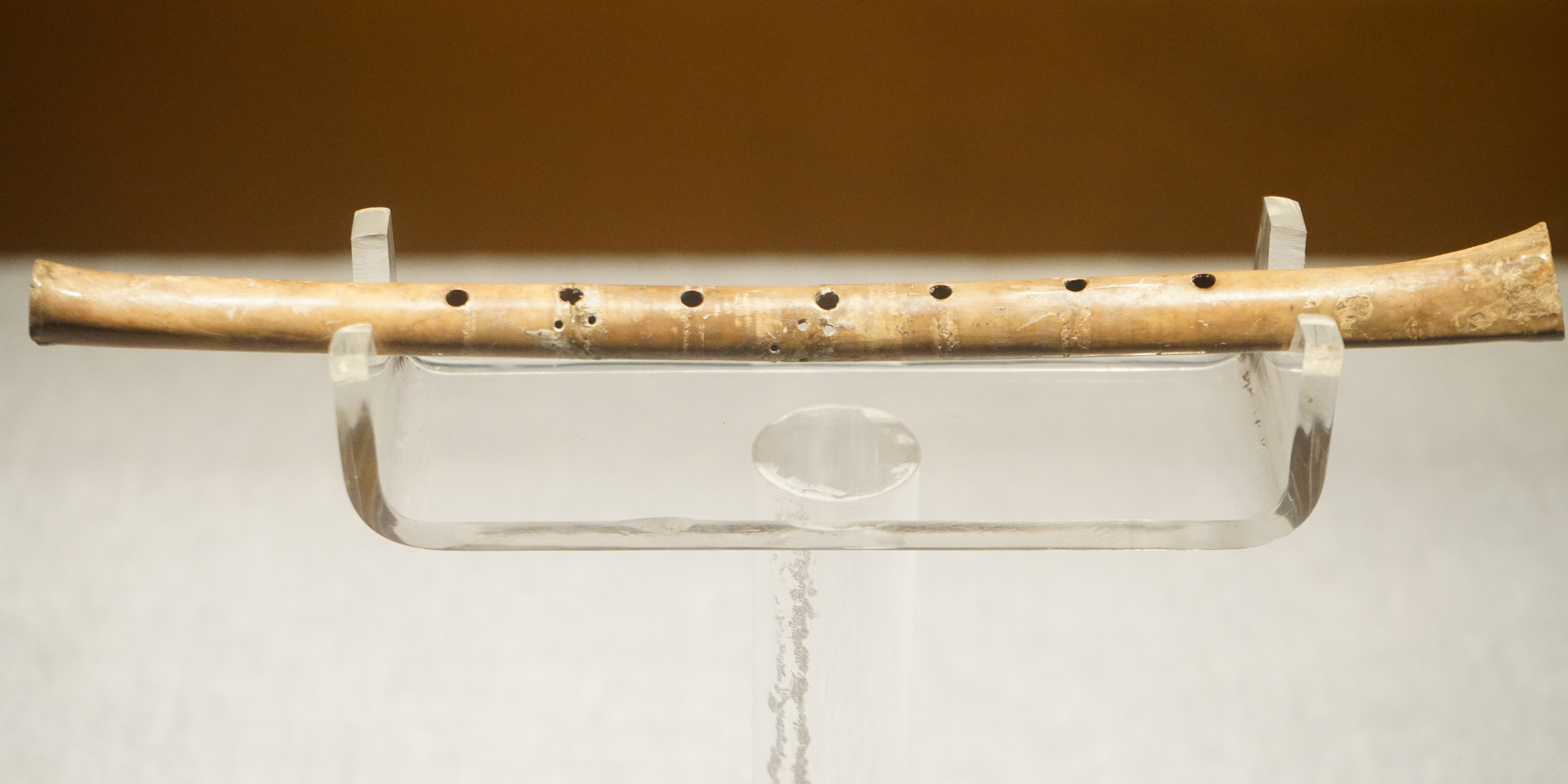Originally published 1 November 1999
My computer has just been playing a 9,000-year-old seven-holed flute, the oldest playable musical instrument ever discovered.
Well, not playing the actual flute. The flute was played by a musician in China, where it was found by archeologists. A sound file of the tune was made available on the internet by Nature magazine, which broke the story of the flute’s discovery. My computer synthesized the music from digital data.
A haunting sequence of sounds reaching across nine millennia.
The flute is one of six, fashioned from the wing bones of red-crowned cranes, unearthed at the early Neolithic site of Jiahu in China’s Huang River Valley. It is perfectly intact (the others have cracks or breaks). The notes we hear are those heard by stone-age people long ago.
Of course, no one knows what sort of music might have been played on these flutes. The internet recording is of a folk song called Xiao Bai Cai, “The Chinese small cabbage.” The melody is sweet and melancholy. Close your eyes and it is easy to imagine a group of Neolithic people sitting near the embers of a dying hearthfire, under a sky strewn with stars — Orion then stood lower on the southern horizon and Vega was nearer to the pole than Polaris — dreamily listening to the plaintive fingering of the flautist.
It was a time when hunter-gatherers were settling down in fixed communities, domesticating plants and animals, baking pots, weaving cloth, inventing new forms of social commerce. Red-crowned cranes snared in a marsh provided resources for the community: food, bone, and feathers. The wing bones went to the flute maker, who shaped them with exquisite care, drilled the holes for fingering the notes, tested the tones. One of the six flutes discovered at Jiahu — the perfectly preserved specimen — was a bit off key. The flute maker drilled a small supplementary hole to make the correction.
The intact flute is the oldest playable musical instrument so far discovered, but it certainly does not represent the invention of instrumental music. Fragments of earlier flutes have been found even at Neanderthal sites. Music, it would seem, is one of the earliest arts, perhaps the oldest. Humans may have whistled and hummed before they spoke.
Darwin wondered if music had its origin in the imitation of animal sounds. The songs of birds, especially, might have inspired human imitation. The man who went to the marsh to snare the red-crowned crane may have dallied in the tall grass and marveled at the song and dance of these majestic birds. The music evoked from the wing bones of cranes might have had a totemic connection with the bird.
The red-crowned crane is a big bird, five feet tall with an eight-foot wingspan. It is by all accounts a gorgeous creature: white body with black neck and wing feathers, black legs, green bill, and scarlet crown. It is best known for its elaborate dance, head bobbing, deep bows, stretches, backwards arches, and the tossing into the air of sticks, feathers and stones by which it finds a mate and celebrates lifelong monogamous bonds. No wonder the red-crowned crane is an oriental symbol for happiness, love, and long life.
Did humans learn to make music by listening to the dawn calls of paired cranes proclaiming their territory, answered by a chorus of calls from other pairs echoing over the marsh? Did they learn to dance by watching the cranes perform their stately rituals in the marsh? No one knows, but the idea has a seductive attractiveness. It is pleasant to think of the flutes from Jiahu providing their plaintive notes for a human dance in imitation of the birds.
In the long years since the Neolithic, flutes have flourished. In the hands of a Jean-Pierre Rampal, for instance, playing a flute concerto of Vivaldi, this simple instrument gives expression to the highest yearnings of the human spirit. The red-crowned crane, unfortunately, has fared less well. As humans mastered technology and spread their numbers wide, the red-crowned cranes were reduced to ever-smaller colonies. The birds once populated large areas of Asia. Today their number worldwide is less than 2,000, and their continued existence as a species is threatened.
I listen again to the “Chinese small cabbage” played on the 9,000-year-old Jiahu flute. What I hear is the “Dance of the Red-Crowned Crane.” Eyes closed, I imagine a morning marsh 9000 years ago in the Huang River Valley of central China, the great green-beaked birds stretching, bowing, and arching their heads backwards, fanning the misty air with their cape-like wings, a pure exuberant celebration of life and fidelity and animal spirit.
The sweet, melancholy notes call us back to a time of innocence and wonder, at the very dawn of settled living, when humans still felt a connection to the natural rhythms and movements of nature. Inspired by the music, I shut down my computer and go for a walk in the closest thing we have in our neighborhood to a Neolithic marsh.



